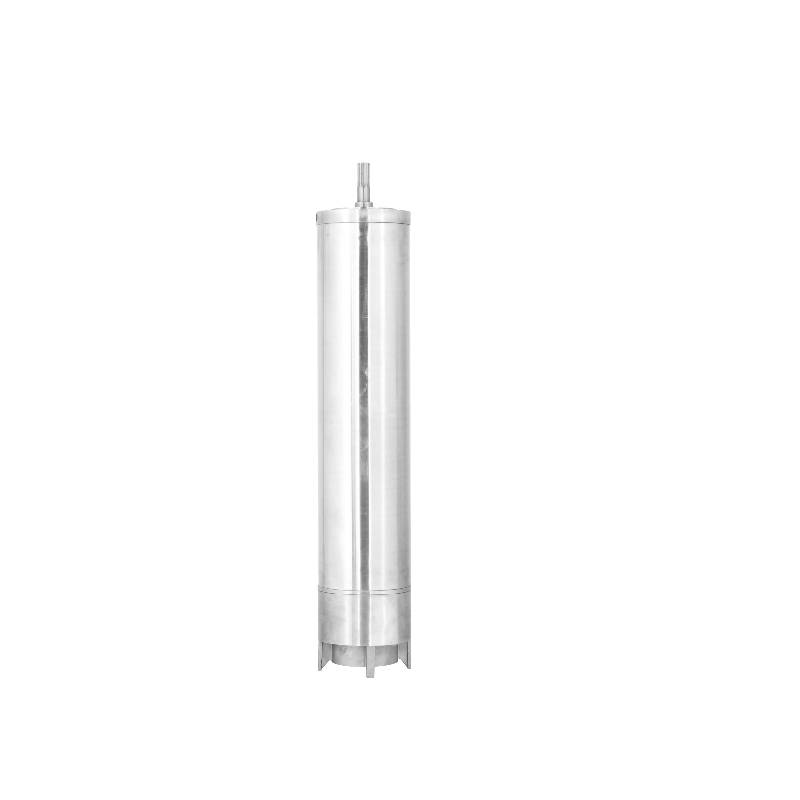Oct . 11, 2024 03:32 Back to list
Submersible Pump Float Switch How to Choose and Install for Optimal Performance
Submersible Pump Float Switch An Essential Component for Efficient Operation
Submersible pumps are widely used in various applications, including dewatering, sewage management, and irrigation systems. These pumps operate underwater, making them highly effective in drawing water from deep wells or flooded areas. However, to ensure optimal performance and prevent operational failures, a crucial component often utilized alongside these pumps is the float switch. This article explores the significance of submersible pump float switches, their working mechanism, types, and benefits.
What is a Float Switch?
A float switch is a type of sensor used to detect the level of liquid in a tank or a well. Its primary function is to control the operation of a pump by sending on/off signals based on the liquid level. When the water level drops below a certain point, the float switch activates the pump, and when it rises to a predetermined level, the switch turns it off. This automatic control helps maintain consistent water levels and prevents dry running, which can lead to pump damage.
Working Mechanism of the Float Switch
Float switches operate based on buoyancy. The device consists of a floating object (the float) attached to a switch mechanism via a rod or cable. As the water level changes, the float ascends or descends accordingly. Depending on its design, the float may move vertically or horizontally.
When the float rises to a designated height (high water level), it activates a mechanical or electrical switch, signaling the pump to turn off. Conversely, when the water level falls (low water level), the float drops, deactivating the switch and triggering the pump to start. This simple yet effective mechanism ensures that the pump operates only when necessary, conserving energy and prolonging the life of the equipment.
Types of Float Switches
Float switches come in various designs, each with specific applications
1. Vertical Float Switch This type is commonly used in tanks and pits where space is limited. The float moves up and down in a vertical orientation, making it an ideal choice for smaller installations.
2. Horizontal Float Switch Typically used in larger tanks, this float switch operates horizontally. Its design allows for the detection of liquid levels across a wider area.
submersible pump float switch

3. Toe Switch This variant is often used in sump pumps. It features a toe-shaped float that engages the switch as the water level increases, making it perfect for tight spots.
4. Digital Float Switch These advanced versions utilize sensors and microcontrollers to provide precise level measurement and are often preferred for automated systems where accuracy is critical.
Benefits of Using Float Switches with Submersible Pumps
The integration of float switches with submersible pumps provides several advantages
1. Automatic Operation Float switches allow for automatic control of pump operations, reducing the need for manual intervention and ensuring consistent water levels.
2. Protection Against Dry Running Without proper monitoring, submersible pumps can run dry, leading to overheating and damage. Float switches prevent this scenario by turning off the pump when the water level is too low.
3. Energy Efficiency By automating the pump's operation based on water levels, float switches help conserve energy, resulting in lower electricity costs and a reduced carbon footprint.
4. Longevity of Equipment Regularly operating pumps under ideal conditions extends their lifespan and reduces maintenance costs. Float switches contribute significantly to maintaining these conditions.
5. Versatility Float switches can be installed in various applications, from residential sump pumps to industrial wastewater management systems, making them highly versatile.
Conclusion
In conclusion, submersible pump float switches are indispensable for the efficient and safe operation of submersible pumps. By providing automatic control, preventing dry running, and ensuring the longevity of equipment, these devices play a significant role in water management systems. Whether for residential, agricultural, or industrial applications, the inclusion of a float switch enhances the reliability and effectiveness of submersible pump operations. With advancements in technology, the future of float switches looks promising, paving the way for even more efficient water management solutions.
-
Submersible Water Pump: The Efficient 'Power Pioneer' of the Underwater World
NewsJul.01,2025
-
Submersible Pond Pump: The Hidden Guardian of Water Landscape Ecology
NewsJul.01,2025
-
Stainless Well Pump: A Reliable and Durable Pumping Main Force
NewsJul.01,2025
-
Stainless Steel Submersible Pump: An Efficient and Versatile Tool for Underwater Operations
NewsJul.01,2025
-
Deep Well Submersible Pump: An Efficient 'Sucker' of Groundwater Sources
NewsJul.01,2025
-
Deep Water Well Pump: An Efficient 'Sucker' of Groundwater Sources
NewsJul.01,2025
-
 Submersible Water Pump: The Efficient 'Power Pioneer' of the Underwater WorldIn the field of hydraulic equipment, the Submersible Water Pump has become the core equipment for underwater operations and water resource transportation due to its unique design and excellent performance.Detail
Submersible Water Pump: The Efficient 'Power Pioneer' of the Underwater WorldIn the field of hydraulic equipment, the Submersible Water Pump has become the core equipment for underwater operations and water resource transportation due to its unique design and excellent performance.Detail -
 Submersible Pond Pump: The Hidden Guardian of Water Landscape EcologyIn courtyard landscapes, ecological ponds, and even small-scale water conservancy projects, there is a silent yet indispensable equipment - the Submersible Pond Pump.Detail
Submersible Pond Pump: The Hidden Guardian of Water Landscape EcologyIn courtyard landscapes, ecological ponds, and even small-scale water conservancy projects, there is a silent yet indispensable equipment - the Submersible Pond Pump.Detail -
 Stainless Well Pump: A Reliable and Durable Pumping Main ForceIn the field of water resource transportation, Stainless Well Pump has become the core equipment for various pumping scenarios with its excellent performance and reliable quality.Detail
Stainless Well Pump: A Reliable and Durable Pumping Main ForceIn the field of water resource transportation, Stainless Well Pump has become the core equipment for various pumping scenarios with its excellent performance and reliable quality.Detail
